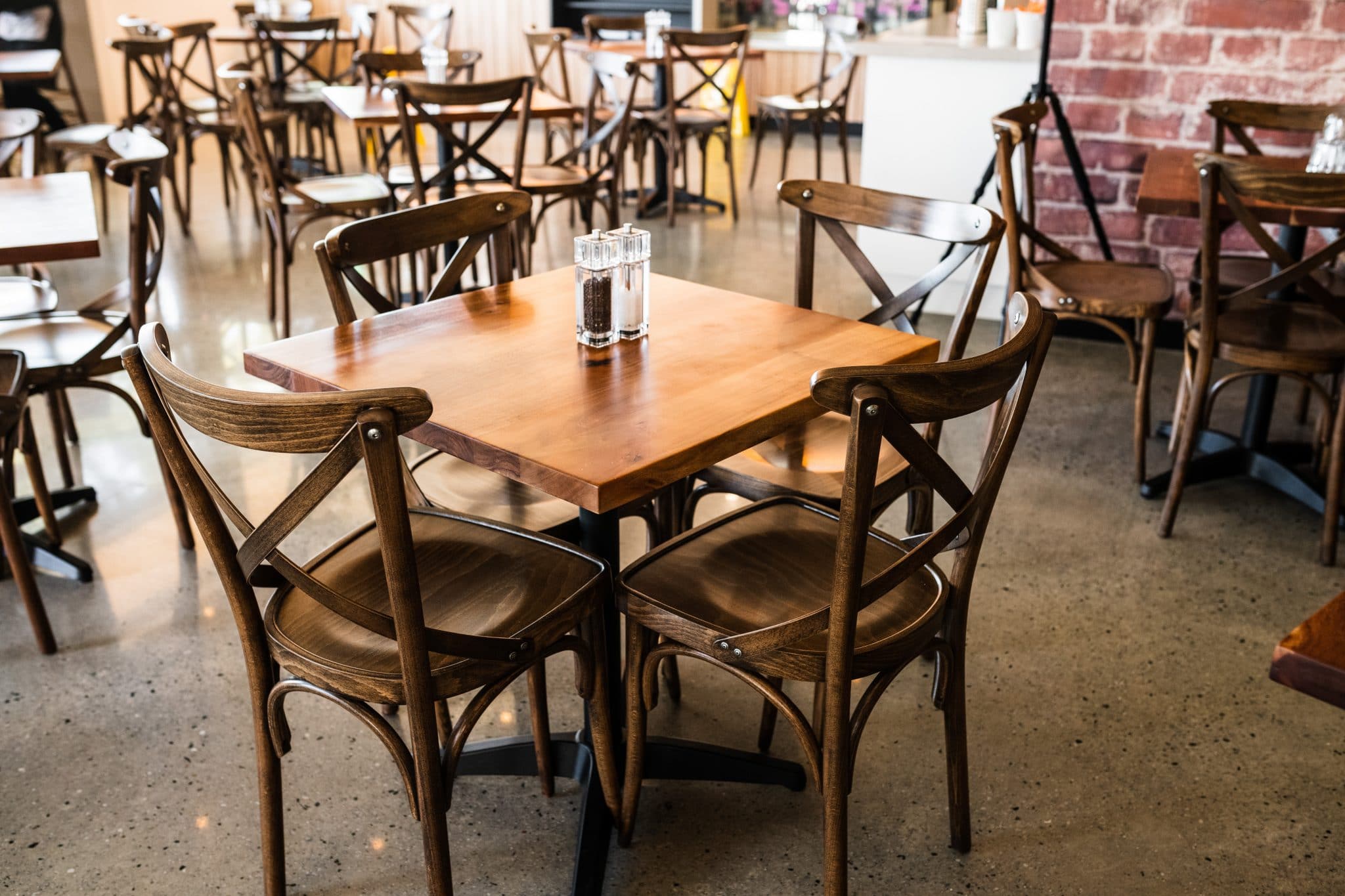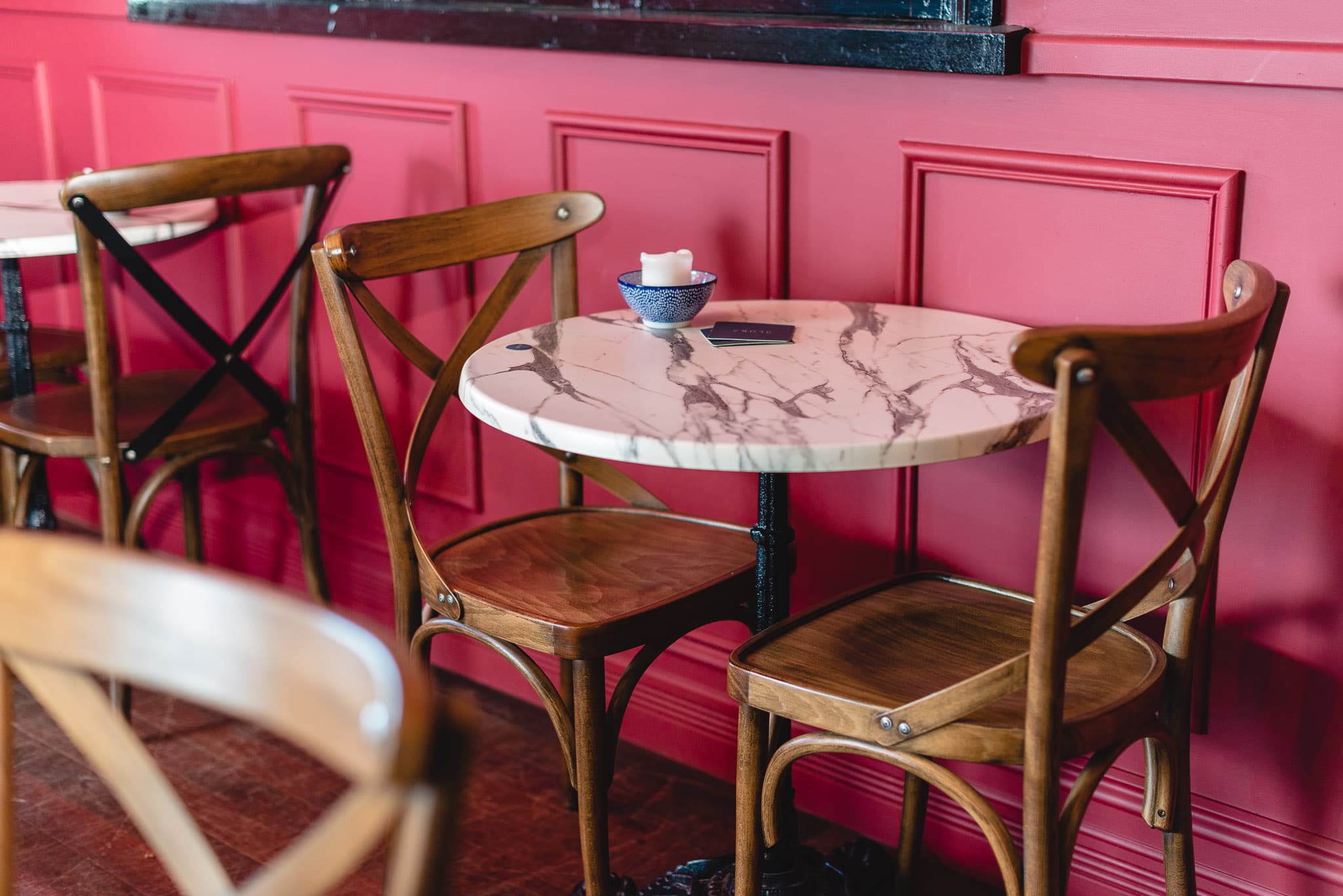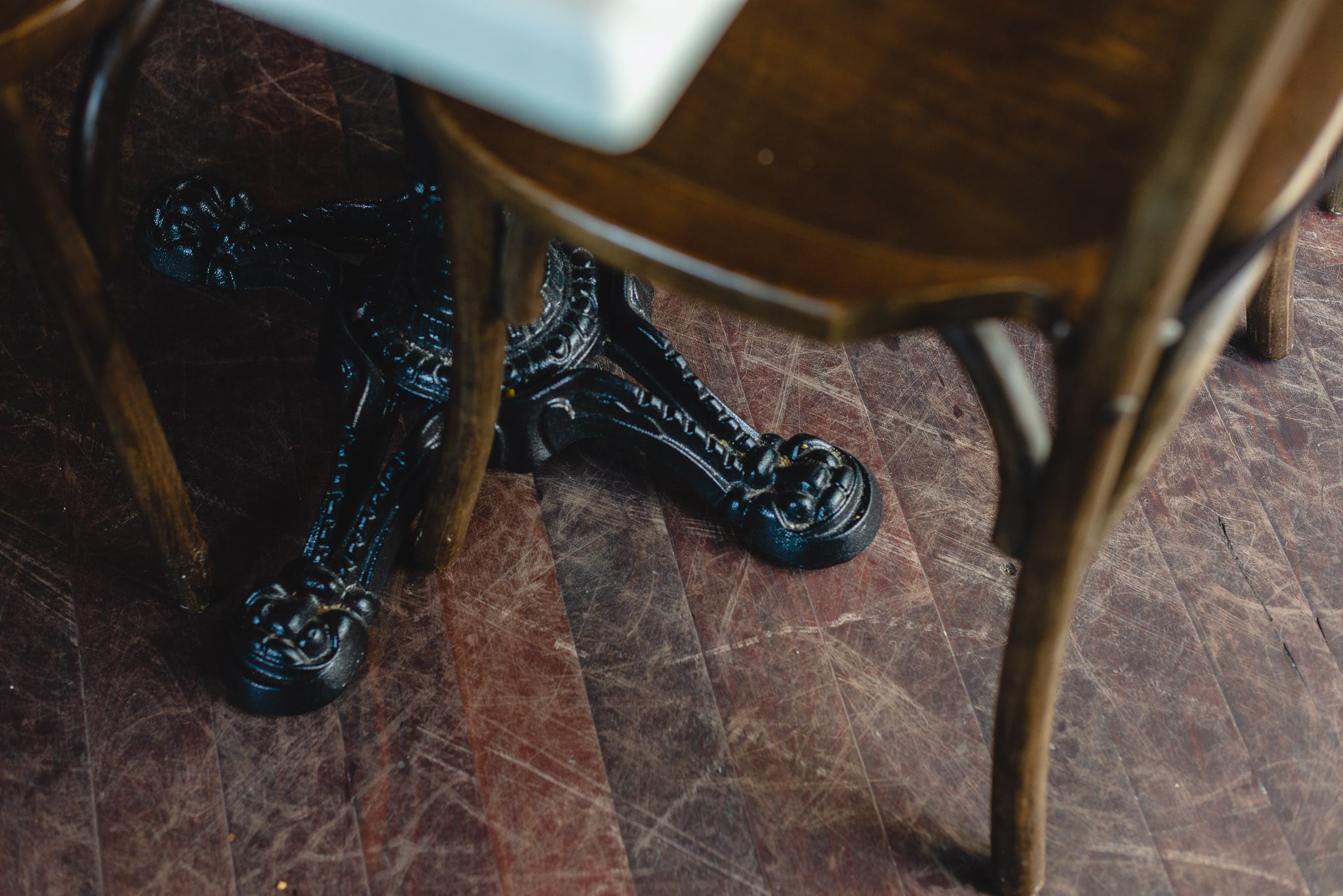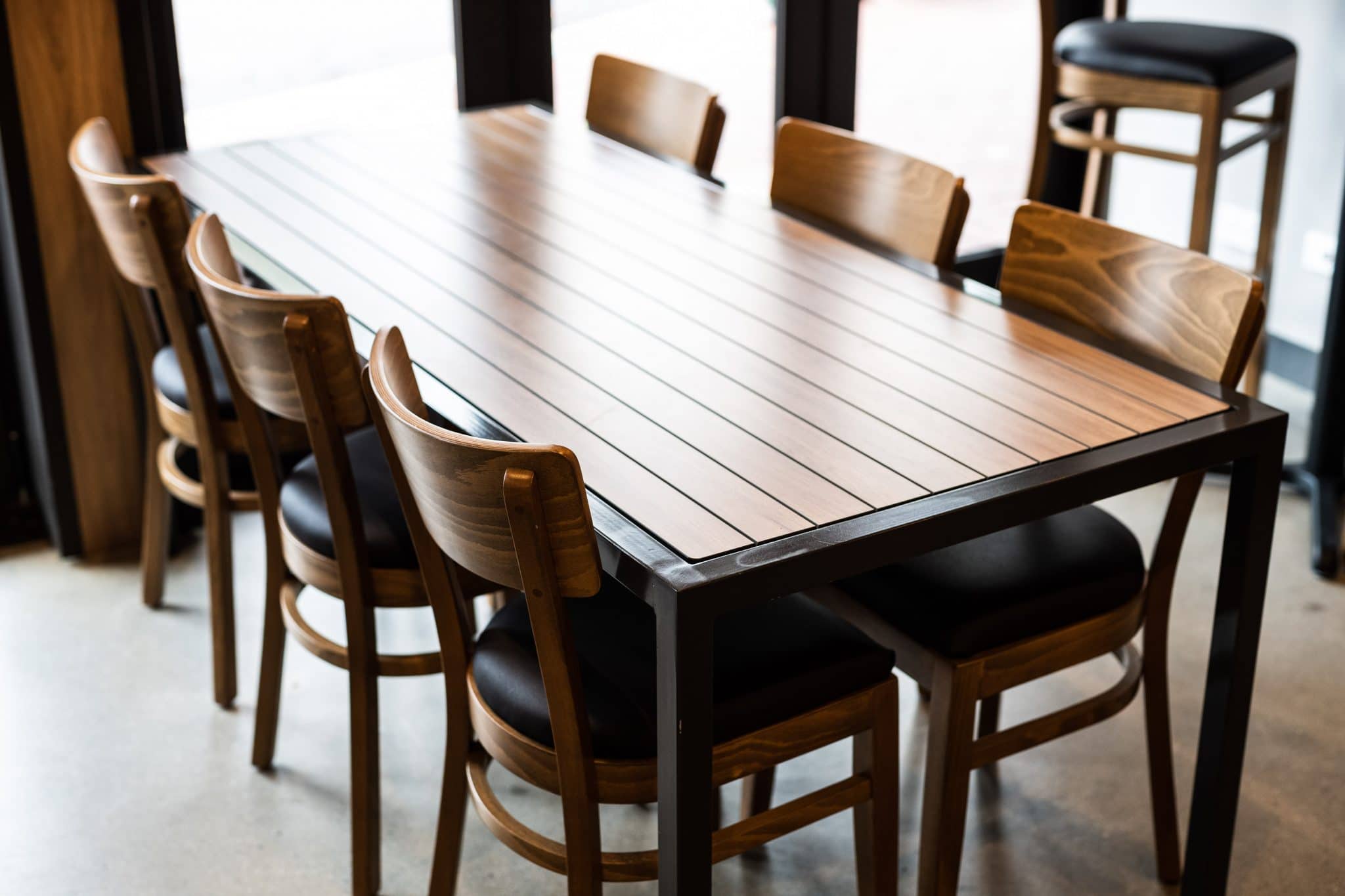Are you looking for some Restaurant Tables for your new venue? Or maybe you’re looking to update some tired tables that have served you faithfully over the years. And you’re unsure what that’s going to cost you.
We understand.
You’ve come to the right place! Here, we have put together some pointers especially for you to guide you through what you can expect to pay for your new restaurant tables.
How does the Material of Restaurant Tables affect the Price?
The materials of the tables are one of the biggest reasons for the diversity found across the industry in the prices offered by furniture suppliers. Working with the best materials will bring you the better quality, yet more expensive, furniture. Whilst working with the cheapest materials, will often mean a lesser quality at a lesser price.
Table Tops
When you are looking at the tops for your tables – whether you’re buying a ready-made table or a separate table top for a base – the materials will greatly affect the pricing. For example, tops made from solid marble or slate would have to be the most costly tops available.
Slate and Marble are natural stones and therefore cost more to cut and produce than a timber or laminate table top. The natural beauty of these table tops is second to none, however the price that they ask is also second to none.
More readily available than slate or marble, but still asking a higher price, are solid timber table tops. Timber table tops can be created from a variety of timbers – from Australian hardwoods, through to Asian timbers. Table tops made from Australian hardwoods would be the most pricey of the timber range, as they are created in Australia from limited resources and with much more expensive labour costs. Alternatively, imported Indonesian or Indian timbers will cost less than locally manufactured table tops, and still be of great quality. The bottom of the timber ladder would be the Asian versions, where the timber used is a fast-growing, mass-produced timber which isn’t as strong as Acacia or Australian Hardwood, not to mention the quality control isn’t maintained when these tops are manufactured. In addition to this, Asian timbers often use rubberwood which tends to warp and twist in the harsh Australian conditions. Therefore, you may pay less for an Asian timber which looks great now, however it may not look quite so good in time.

Other table tops might be made from laminate – being either pre-laminated or compact laminate. The more cost-effective version would be the pre-laminated table tops, which come in a wide range of colours and tend to be better value. However, these table tops can’t go outside, whereas compact laminate can. Compact laminated table tops are incredibly hardy, thinner, weather-proof table tops which can ask a higher price than the pre-laminated competitors.
Perhaps the most common and the most cost-effective commercial table top available would be the resin versions. At Adāge Furniture, we call these Gentas Table Tops, but you may also have heard of them referred to as SM France table tops or Isotops. These table tops are strong, moulded tops, that offer beautiful finishes and ask a reasonable price. These tops aren’t your solid natural materials, such as timber or marble, and the process to create the tops is much simpler than a laminate table top. This often means moulded resin table tops are the cost-effective table top available in the commercial furniture market.

Table Bases
Table tops are important, but the table base is also important to consider when buying your table. Once again, the material that the base is made from greatly affects the price that you pay for the table top. Table bases range from standard steel to aluminium to cast iron, with the most expensive being stainless steel.
Standard steel is in abundance and therefore tends to be the most inexpensive. It is the easiest for manufacturers to get a hold of and, consequently, the easiest for suppliers to supply greater volumes of product.
Cast iron bases come next up the ladder, however they can prove to be more costly than standard steel as they require moulds for each base. Each mould is crafted for each individual style, and this takes time and resource.
Stainless steel is most commonly the most expensive material for table bases due to the additives in the product which make it corrosion resistive. However, even within stainless steel, there are different levels. #201 is a Chinese steel, which is sold as stainless steel, however it is very inferior and has no outdoor characteristics. #304 is the best all-rounder, which is the most commonly used stainless steel for bases. #316 is the marine-grade stainless steel, which is very expensive and therefore not often used for bases.

How do Table Base Mechanisms affect the Price?
Not only does material affect table base pricing, but you can expect to pay more for table bases which offer different mechanisms – such as self-levelling or folding abilities. Various mechanisms can make your life much easier, however they each come with a price tag to reflect this.
Self-levelling table bases, such as NOROCK table bases, tend to be more expensive due to the mechanisms that are needed for the bases to be self-levelling. These table bases are very useful with their ability to self-level on any surface, however they also cost more than a base that can be manually levelled with adjustable feet.
Folding table bases also cost more than the average base due to the structures used which allow the tops to be folded down and stacked into each other. These bases are very handy for restaurant owners who like to be able to pack their tables away.
Do the manufacture origins affect the price of Restaurant Tables?
As with any furniture, the origin of the furniture will affect the cost of the product. Different countries have different methods of production and often have varying standards with regards to the quality control kept. This all affects the price that you will pay for the products.
Often furniture of Asian origin will come at a lower cost than those of European or Australian origin. Products from Asia are mass-produced in factories with minimal costs and much lower standards of quality. The materials used are often inferior and cost less for the manufacturer, and therefore can be sold at a cheaper price. However, they are also of an inferior quality.
European manufacturers maintain tight quality controls and focus on producing products of high quality, rather than in mass. These manufacturers come from a long line of craftsman, and they take pride in their – producing items of art, with fantastic workmanship. However, tight quality control must also be maintained by the importer of the table top or base to ensure that the products being imported remain of the best quality.
With all Restaurant Tables, you can be sure that the higher quality furniture will cost you more. Furniture that is manufactured in Italy, Turkey, Bulgaria or any European country, will always ask a higher price than their Asian counterparts. Similarly, locally manufactured tables will also cost more. This is mainly due to the higher quality raw materials used, and the quality control that is maintained in the factories. The furniture is crafted to last, while cheaper versions are created in mass quantities with little attention paid towards quality. As with anything in life, you can expect to get what you pay for.
